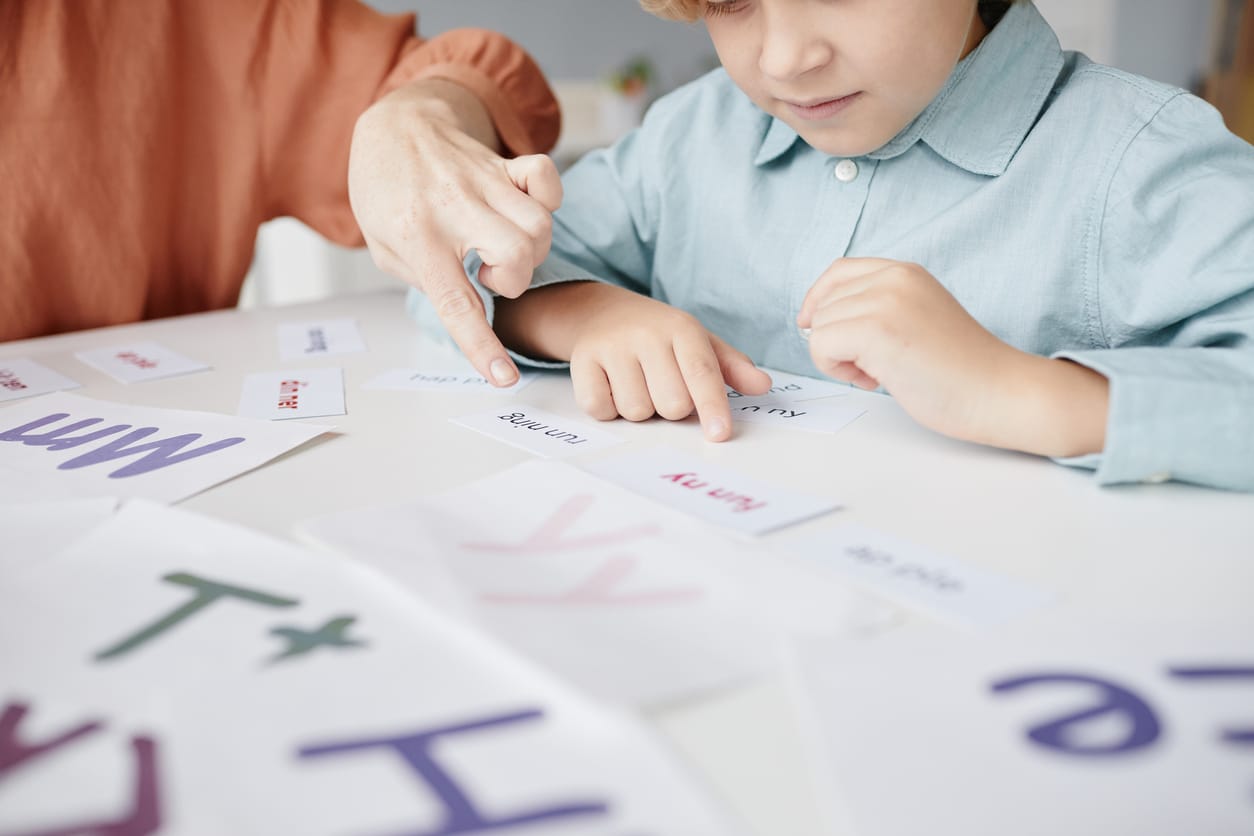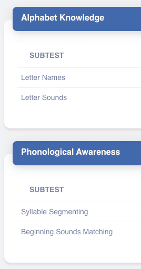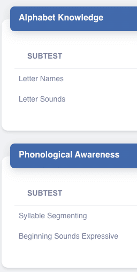Pre-K Language & Literacy Screener
Virginia Literacy Partnerships (VLP) Team

We appreciate the time that our early childhood educators have invested in learning about the new screener, both how to give the assessment to children and how to use it to guide early literacy instruction. We understand that learning how to use a new screener is a big investment of time and effort. Our team appreciates your engagement in this process and your continued investment in the early literacy development for the children in your classrooms and centers.
The Pre-K Language & Literacy Screener was launched in the Fall of 2022 and replaces PALS-PreK. PALS-PreK had not been updated in many years. An update to the content of the screener was necessary to ensure that the screener aligned with the most current knowledge of early literacy development. As with most screeners used in education settings, the development process is ongoing. A key part of our development process is hearing from the field about your experiences using the screener.
We have heard from many of you about the use of the screener. We appreciate hearing from each and every one of you and learning from your feedback. You may submit feedback by emailing literacy@virginia.edu. Below we will address some of the most common questions about the screener. We hope this information is helpful as you continue to use the screener in your own context to better understand the literacy development of the children in your classrooms and centers.
Question:
Will anything change on the assessment?
Answer:
The revised pre-k screener has new subtests to align it with our most current knowledge of early literacy development. The development process is ongoing; as we continue to collect statewide data and educator feedback, our psychometricians and pilot team members are considering ways to improve the screener.

Question:
Why isn’t rhyming on the new assessment?
Answer:
The inclusion of rhyming on the old pre-k screener follows outdated science and does not align with our most current knowledge of early literacy development, and the important predictors of later literacy success. Current knowledge informs us that rhyming is not as predictive as other phonological awareness skills such as the ability to detect and manipulate syllables and individual phonemes.
The Syllable Segmenting and Beginning Sounds subtests are on the Fall and Spring screeners, and the Phoneme Blending subtest is on the Pre-K4 Spring assessment. Instructionally, if children are not rhyming, we do not want to dwell there, but move on to other important phonological awareness tasks like syllables and beginning sounds.
Question:
Why are uppercase and lowercase letters together in the Letter Names subtest?
Answer:
While letter names research indicates that, generally, children recognize uppercase letters first, we want to give children the opportunity to recognize the letters in either form (uppercase or lowercase). If the letters are overwhelming for children in your class or center, you may use a sheet of cardstock to show one row of letters at a time, or even use a window cutout to show only one letter at a time. We want to move through this subtest at a good pace, so if children do not name a letter, mark “no answer,” and move to the next letter. You may save parts of the subtest if the child is unable to complete it in one sitting.

Question:
On the Beginning Sounds Expressive subtest, why can children say the first sound or a word beginning with the first sound?
Answer:
The Beginning Sound Expressive subtest is measuring whether a young child can hear the first sound and then reproduce it. That can be done either by producing the same sound (phoneme) or a different word that starts with the same sound (phoneme). Either answer is correct, since the goal is to see if they can identify and reproduce the sound, which is the skill that is predictive of later literacy development. The Assessment Video for this subtest shows a child answering with both types of correct answers.
We have heard from some educators in the field that the Beginning Sounds Expressive subtest instructions were confusing for their children. We are looking into how we can simplify those instructions.
Question:
What is the purpose of the Nonsense Sentences subtest?
Answer:
One of the significant changes made to the Pre-K assessment was to measure not just code-based skills (what was assessed on PALS-PreK) but also language-based skills, in order to assess a comprehensive set of skills that are known to be predictive of later reading comprehension. The purpose of the Nonsense Sentences subtest is to measure children’s awareness and expression of syntactic structures – combining words and word parts like plural ‘s’ and the past tense ‘ed’ to form sentences. Although there could be several ways to assess this skill, our team of language experts, including speech language pathologists, tested the utility of having children repeat silly sentences. This decision was made because research indicates that a child is reluctant to “correct” an adult, and that a child will only repeat a syntactic structure correctly if they have mastered that structure in their own language. Repeating a silly sentence puts children on equal footing when it comes to specific language to which some children may have been exposed to and some not. Here is the explanation found on page 3 of the Pre-K Language & Literacy Screener binder:
Children’s ability to repeat nonsense sentences has been shown to reflect the grammatical structures they use correctly in conversational speech. Therefore, if children do not, for example, correctly repeat a plural noun when presented by the examiner, it is unlikely they correctly use plurals in their everyday speech. This subtest gives educators an indication of which grammatical structures a child has in their repertoire.

Question:
Shouldn’t we read stories multiple times to children? Why does a child hear the story for the Passage Comprehension subtest only once?
Answer:
In the classroom, it is good practice to reread stories to children, and we encourage this within the context of your classroom instruction. However, when we are assessing children’s ability to re-tell a story, it is common practice for them to hear the story once. For the Passage Retell subtest, we want to know the story that children tell us after one “reading.” Children do not need to use the same words or even tell the same story. We are looking to see the complexity of language that the child produces. It is normal for children this age to have an easier time on the Receptive Questions subtest as compared to the Expressive Questions subtest.
Question:
Which subtests are given at Mid-Year? Why are there only four?
Answer:
There are only four subtests given at Mid-Year: Letter Names, Letter Sounds, Syllable Segmenting, Beginning Sounds Matching (Pre-K3), and Beginning Sounds Expressive (Pre-K4). These subtests show growth in children’s skills in a shorter period as compared to the language subtests. Therefore, the language subtests (Nonsense Sentences and Passage Comprehension) are not administered mid-year.
The Mid-Year subtests for Pre-K3 are:

The Mid-Year subtests for Pre-K4 are:

Question:
Which child reports are available?
Answer:
There are individual child and class reports available. These reports are found on the Reports tab.
Individual child reports include:
- Child Summary
- Skill Progress
- Uppercase Letter Names
- Lowercase Letter Names
- Letter Sounds
Class reports include:
- Class Scores
- Class Uppercase Letter Names
- Class Lowercase Letter Names
Question:
Are there Pre-K benchmarks?
Answer:
This year, the new Pre-K Language & Literacy Screener has Skill Development Bands for some of the code-based subtests.
The Pre-K Language & Literacy Screener Skill Development Bands provide a gauge of skill progress across the year with the goal of reducing the risk for reading difficulties upon entering Kindergarten. Currently, only the Alphabet Knowledge subtests (i.e., Letter Names and Letter Sounds) and the Phonological Awareness subtests (i.e., Syllable Segmenting, Beginning Sounds Matching [Pre-K3], and Beginning Sounds Expressive [Pre-K4]) have Skill Development Bands. It is possible that these Skill Development Bands may change in the future once Virginia Literacy Partnerships collects and analyzes state-level population data from the 2022-2023 school year.
There are three Skill Development Bands for each of the four subtests: Beginning, Growing, and Strong. For each of the four subtests:
- Children who score in the Beginning band for a subtest demonstrate limited early literacy skills in this area for this age-level.
- Children who score in the Growing band for a subtest demonstrate developing early literacy skills in this area for this age-level.
- Children who score in the Strong band for a subtest demonstrate well-developed early literacy skills in this area for this age-level.
The goal is to have children in the Strong section of the Skill Development Bands at the end of the year.

Question:
Can I use Pre-K subtest data for goal setting?
Answer:
Educators may use Letter Names, Letter Sounds, Syllable Segmenting, Beginning Sounds Matching (Pre-K3), and Beginning Sounds Expressive (Pre-K4) for goal setting.
Question:
What can we do with the information we get from the Pre-K Language & Literacy Screener?
Answer:
The screener data is meant to provide instructionally relevant information to teachers. The screening results can be used to determine where individual children may have strengths and opportunities for growth in their early literacy skills. Keeping both language skills and code-based skills (i.e., letter names and sounds, syllable awareness, and beginning sounds awareness) in mind when planning instruction and when talking with children during play/centers can help children develop early literacy skills that will set them on the path for later reading success.
We appreciate your flexibility and feedback regarding the new Pre-K Language & Literacy Screener. Thank you for all that you do!
Virginia Literacy Partnerships
888-882-7257
literacy@virginia.edu
More Questions for the VKRP Team? VKRP provides support via the online chat feature when you are in the system, via email vkrp@virginia.edu, and via toll free 866-301-8278

